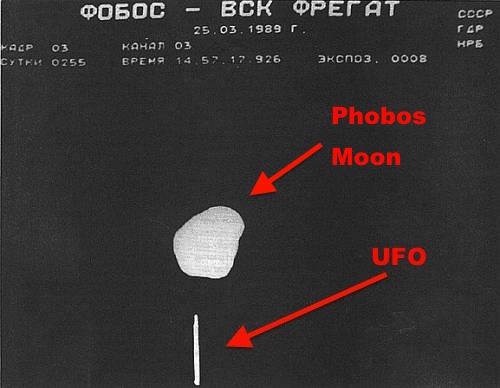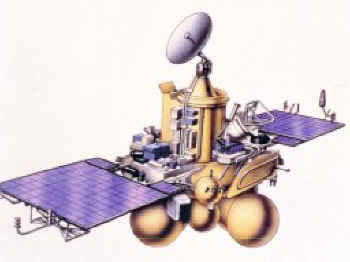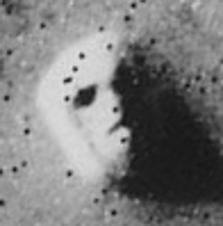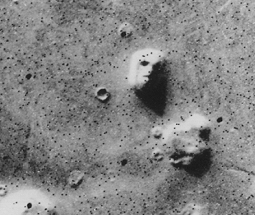
Why do we spend so much money on a dead barren planet?
Could it be that Mars was once like Earth?
Could the Earth end up like Mars if we do not Curb our ways?
More money has been spent on Mars than on the Moon.
Lets look at why Mars is so interesting ...
We have visited Mars in 3 ways
Fly Bys a space probe on a multi mission flys past to gain speed for a burn to a further planet-uses the fly by opportunity to take pictures
Orbits - the spacecraft orbits the planet to build a map that can be downloaded back to earth
Rovers - Make actual contact with the planet taking samples & showing video feeds & can perform tasks,drill,drive,recharge & even use martian storms to clean its solar panels-CLEARLY our best & most ambitious space program ever.
The image below is the last image from the stricken Phobos 2 mission to Mars
a massive object comes into view-the size is 25 miles.Phobos ceased transmission immediately no contact has been made & deep space telemetry shows no sign of even a battery charging-it was rendered totally useless,powerless & helpless,eventually it would have entered the martian orbit-crashed & thats that....IF that is what happened ......

|  Left-The last image from Phobos 2 Above Phobos 2 Prototype (still classified) Below left The "face on mars" as taken By the Viking 7 probe in 1977 Plus close up |
http://www.google.co.uk/mars/ Google Maps mars- obtained By the orbits of several spacecraft
Mars is the fourth planet from the Sun and the second smallest planet in the Solar System. Named after the Roman god of war, it is often described as the "Red Planet", as the iron oxide prevalent on its surface gives it a reddish appearance.[14] Mars is a terrestrial planet with a thin atmosphere, having surface features reminiscent both of the impact craters of the Moon and the volcanoes, valleys, deserts, and polar ice caps of Earth. The rotational period and seasonal cycles of Mars are likewise similar to those of Earth, as is the tilt that produces the seasons. Mars is the site of Olympus Mons, the second highest known mountain within the Solar System (the tallest on a planet), and of Valles Marineris, one of the largest canyons. The smooth Borealis basin in the northern hemisphere covers 40% of the planet and may be a giant impact feature.Mars has two known moons, Phobos and Deimos, which are small and irregularly shaped. These may be captured asteroids,similar to 5261 Eureka, a Martian trojan asteroid.
Until the first successful Mars flyby in 1965 by Mariner 4, many speculated about the presence of liquid water on the planet's surface. This was based on observed periodic variations in light and dark patches, particularly in the polar latitudes, which appeared to be seas and continents; long, dark striations were interpreted by some as irrigation channels for liquid water. These straight line features were later explained as optical illusions, though geological evidence gathered by unmanned missions suggest that Mars once had large-scale water coverage on its surface. In 2005, radar data revealed the presence of large quantities of water ice at the poles[20] and at mid-latitudes.The Mars rover Spirit sampled chemical compounds containing water molecules in March 2007. The Phoenix lander directly sampled water ice in shallow Martian soil on July 31, 2008.
Mars is currently host to five functioning spacecraft: three in orbit – the Mars Odyssey, Mars Express, and Mars Reconnaissance Orbiter; and two on the surface – Mars Exploration Rover Opportunity and the Mars Science Laboratory Curiosity. Defunct spacecraft on the surface include MER-A Spirit, and several other inert landers and rovers, both successful and unsuccessful, such as the Phoenix lander, which completed its mission in 2008. Observations by the Mars Reconnaissance Orbiter have revealed possible flowing water during the warmest months on Mars.
Mars can easily be seen from Earth with the naked eye. Its apparent magnitude reaches −3.0, which is surpassed only by Jupiter, Venus, the Moon, and the Sun. Optical ground-based telescopes are typically limited to resolving features about 300 km (186 miles) across when Earth and Mars are closest, because of Earth's atmosphere.

